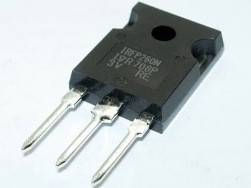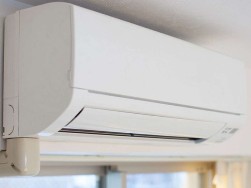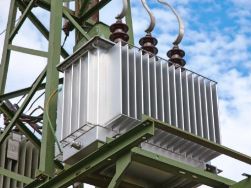Power MOSFET and IGBT transistors, differences and features of their application
 Technologies in the field of power electronics are constantly being improved: relays become solid-state, bipolar transistors and thyristors are being replaced more and more extensively by field effect transistors, new materials are developed and applied in capacitors, etc. - active technological evolution is definitely visible everywhere, which does not stop for a year . What is the reason for this?
Technologies in the field of power electronics are constantly being improved: relays become solid-state, bipolar transistors and thyristors are being replaced more and more extensively by field effect transistors, new materials are developed and applied in capacitors, etc. - active technological evolution is definitely visible everywhere, which does not stop for a year . What is the reason for this?
This is obviously due to the fact that at some point manufacturers are not able to satisfy consumers' requests for the capabilities and quality of power electronic equipment: the relay sparks and burns contacts, bipolar transistors require too much power to control, power units are unacceptably a lot of space, etc. Manufacturers compete among themselves - who will be the first to offer the best alternative ...? So there were field MOSFET transistorsthanks to which management ...
Mendosin motor - device and principle of operation, features of use
 The Mendocino Motor is named after the Mendocino County, on the coast of California, USA. Here lives the inventor Larry Spring, who on July 4, 1994 invented this motor. This model stood for a long time on the windowsill of Larry’s shop, and after a while it became a real attraction of the district, because the rotor rotated and rotated, being suspended literally in the air.
The Mendocino Motor is named after the Mendocino County, on the coast of California, USA. Here lives the inventor Larry Spring, who on July 4, 1994 invented this motor. This model stood for a long time on the windowsill of Larry’s shop, and after a while it became a real attraction of the district, because the rotor rotated and rotated, being suspended literally in the air.
Spring motor, like any other motor, consists of a rotor and a stator. However, the Mendocino motor is not an ordinary motor. The stator of the Mendocino motor is a stand with a permanent magnet and with a magnetic support, and the rotor is a dielectric frame with a set of solar panels mounted on top of coils wound around a rotor levitating above the magnetic supports. Photons of sunlight activate solar panels, which in turn generate an electric current, itpasses through coils wound around the rotor ...
Which current is more dangerous, direct or alternating?
 When there was a “current war” between Nikola Tesla and Thomas Edison, one of Edison’s main arguments against Tesla's alternating current systems was precisely the argument that alternating current was deadly to humans. And this is true - an alternating current of low frequency (50-60 Hz), even at a voltage of 48 volts, can cause significant harm to human health up to cardiac arrest. The average person will not even feel a constant current at the same 48 volts.
When there was a “current war” between Nikola Tesla and Thomas Edison, one of Edison’s main arguments against Tesla's alternating current systems was precisely the argument that alternating current was deadly to humans. And this is true - an alternating current of low frequency (50-60 Hz), even at a voltage of 48 volts, can cause significant harm to human health up to cardiac arrest. The average person will not even feel a constant current at the same 48 volts.
But today, it is precisely low-frequency alternating current that is used to transfer electric power over long distances, it is easily converted by transformers, leads to less energy loss, and is suitable for powering electric motors. Therefore, the current from the outlet is actually deadly. This fact cannot be underestimated. Constant current is safe only at low voltage. So, for example, during the well-known therapeutic procedure, electrophoresis is applied direct current ...
10 rules and recommendations on electrical safety during repair work
 Electrical safety is a matter of mental attitude (the feeling that you want to work safely), professional knowledge and common sense, which concern us all not only from the point of view of our own protection, but also from the point of view of those who surround us and the place where we live or develop some kind of activity. When working with electricity, there is no freedom of action due to the possibility of making a mistake, improvisation and reckless decisions.
Electrical safety is a matter of mental attitude (the feeling that you want to work safely), professional knowledge and common sense, which concern us all not only from the point of view of our own protection, but also from the point of view of those who surround us and the place where we live or develop some kind of activity. When working with electricity, there is no freedom of action due to the possibility of making a mistake, improvisation and reckless decisions.
Many of the accidents that occur with electrical appliances and installations are solely due to user carelessness and a lack of knowledge of basic safety standards. The following general rules and recommendations will help you prevent accidents when performing any electrical work. Its timely use can save your life or the life of other people, as well as its inability to cause burns ...
Vertical wind generators with Daria rotor
 Wind generators based on horizontal axis turbines are not the only possible solution for the high-quality conversion of wind energy into electricity. There are other designs that sometimes show greater efficiency than axial turbines. An example of such an alternative design is a Daria vertical rotor wind generator.
Wind generators based on horizontal axis turbines are not the only possible solution for the high-quality conversion of wind energy into electricity. There are other designs that sometimes show greater efficiency than axial turbines. An example of such an alternative design is a Daria vertical rotor wind generator.
This unusual solution was proposed back in 1931 by the French aircraft designer Georges Darier, who set himself the task of creating such a wind generator that would work in any direction of the wind, without requiring strict orientation. It was proposed to position the rotor of the generator together with narrow blades vertically, so that in both light and strong winds, a significant part of the air flow would not encounter significant aerodynamic drag, but would directly press on the working surfaces of the blades, leading to their rotation ...
In what cases is a conventional air conditioner better than an inverter
 Normal air conditioning or inverter? Which one to choose? It all depends on your needs. Although these units resemble each other in appearance, and their control panels are similar, however, there are significant functional differences.
Normal air conditioning or inverter? Which one to choose? It all depends on your needs. Although these units resemble each other in appearance, and their control panels are similar, however, there are significant functional differences.
It is these differences that make the inverter unit as a whole more productive, economical, and at the same time more expensive. But this does not mean at all that conventional (non-inverter) air conditioning is in demand only because of its cheapness. On the contrary, each type of air conditioner has its own, most appropriate and suitable application. The inverter air conditioner is designed for continuous operation, while a conventional air conditioner is designed for cyclical operation. What does it mean for cyclic? This means that a conventional air conditioner, when turned on, immediately starts to give out full power until the room temperature set by the settings is reached ...
How are dimmable LED lamps arranged and working, unlike ordinary ones?
 An ordinary non-dimmable LED lamp, if we are talking about a quality product, contains in its basement a miniature step-down converter for mains voltage, the so-called pulsed DC-DC converter.
An ordinary non-dimmable LED lamp, if we are talking about a quality product, contains in its basement a miniature step-down converter for mains voltage, the so-called pulsed DC-DC converter.
The task of this unit is to obtain an alternating mains voltage (220-230 volts), first rectify it into a constant voltage, and then convert this constant voltage to a low constant voltage at the lamp output, and the magnitude of the received output voltage must exactly match the installed load, that is, a chain of LEDs, which stands in this particular lamp. This step-down DC-DC converter inside a non-dimmable LED lamp has a stabilized output, which means that with any deviation (within reasonable limits) of the current value of the supply voltage from ordinary 220-230 volts, the output will still be ...
Hysteresis and eddy current losses
 During magnetization reversal of magnetic materials by an alternating magnetic field, part of the energy of the magnetic field involved in the magnetization reversal is lost. A specific part of the power, which is called “specific magnetic loss”, is dissipated per unit mass of a certain magnetic material in the form of heat.
During magnetization reversal of magnetic materials by an alternating magnetic field, part of the energy of the magnetic field involved in the magnetization reversal is lost. A specific part of the power, which is called “specific magnetic loss”, is dissipated per unit mass of a certain magnetic material in the form of heat.
Specific magnetic losses include dynamic losses as well as hysteresis losses. Dynamic losses include losses caused by eddy currents and magnetic viscosity. Losses due to magnetic hysteresis are explained by irreversible movements of domain boundaries. Each magnetic material has its own hysteresis loss proportional to the frequency of the magnetizing magnetizing field, as well as the area of the hysteresis loop of this material. To reduce hysteresis losses, they most often resort to the use of ...
